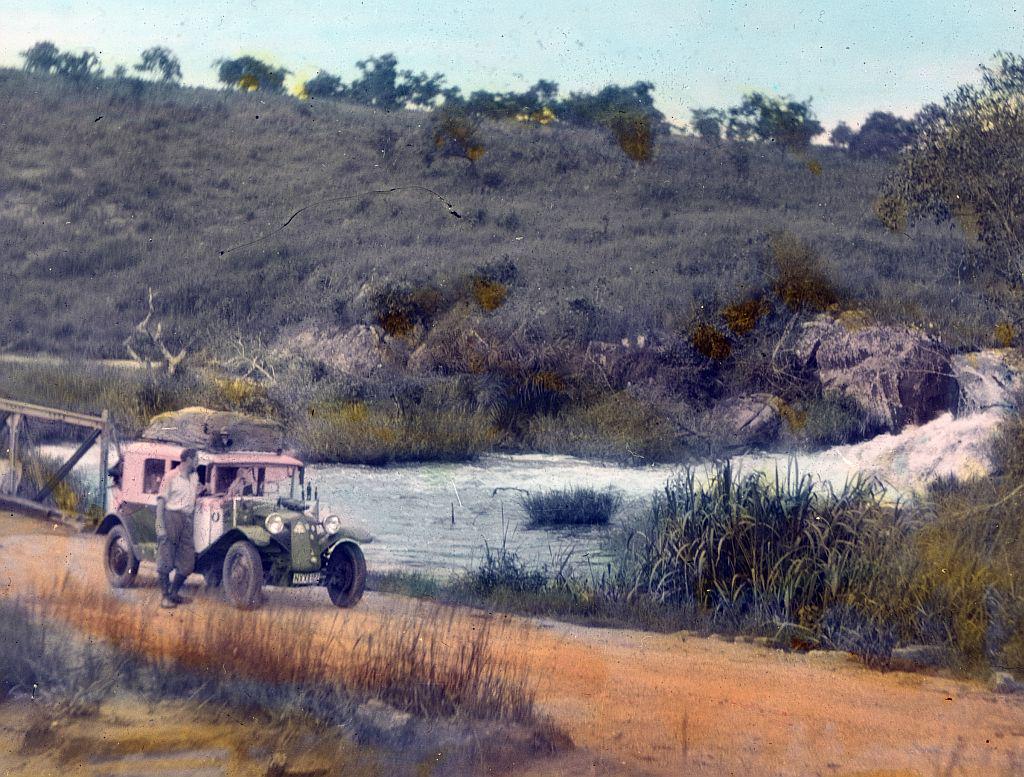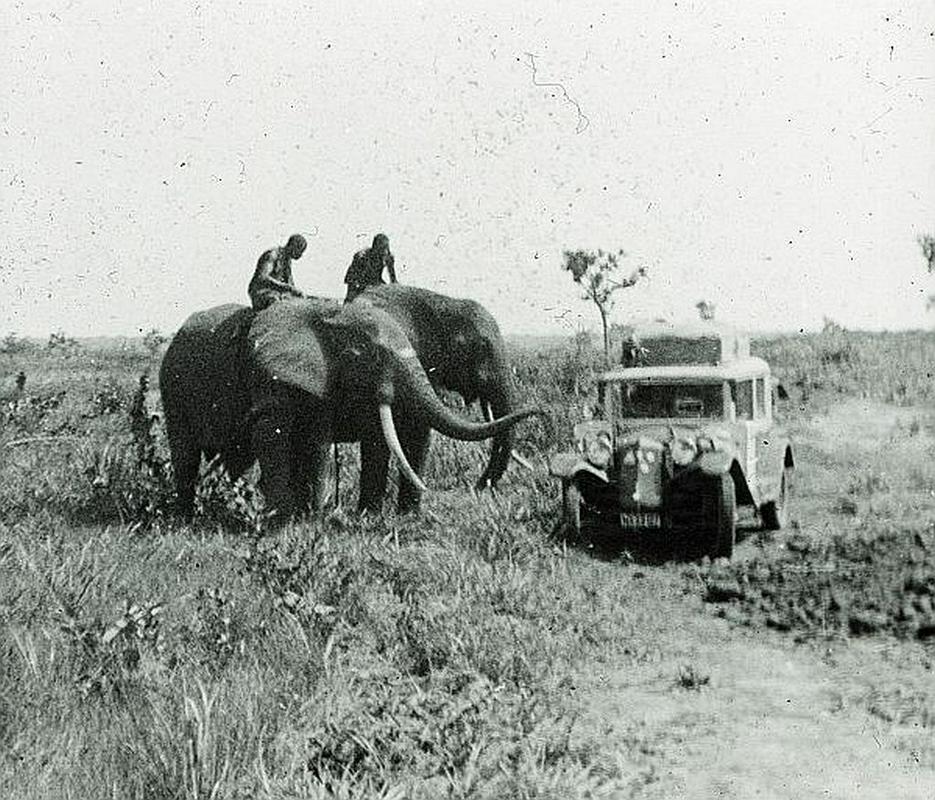
Foit and Baum made their African journey with a serially produced, two-valve, air-cooled Tatra car, which they had equipped with a sleeping area and additional cargo space for luggage, extra fuel, and water. Their journey covered 24,000 kilometers and was captured in 6000 photos.
Crossing the African continent
The traveling exhibition, set up by the Velenje Museum and hosted at the Slovenian Ethnographic Museum, is titled Africa 1931: Foit's Photographic Glass Plates and features approximately 200 of the most interesting photographs on glass. The photographs are complemented with brief captions based on the sculptor's travel diary.
In addition to photographs, the sculptor Fiot returned home with writings about the people of Africa, while the biologist Baum mostly collected and studied insects. The two began their journey in Prague on April 1, 1931, from where they headed to the port town of Trieste. From there, a ship took them to Egypt, from where they set off on their drive toward southern Africa.
The Velenje Museum's collection of photographic plates includes 530 photos taken by Foit. At the time, glass photographic plates were made so they could be shown as slides at travel lectures in movie theaters. These types of slides were relatively common in Czechoslovakia, but rare in Slovenia.
The sculptor settles in Velenje
Foit visited Africa again 14 years later along with his wife Irena. In 1971, the couple settled in Velenje and donated a large portion of the African material to the local museum. That is how the Velenje Museum obtained the glass slides, along with two maps that shed light on the 1931 journey across Africa.
The grand opening of the Velenje Museum's exhibit, Africa 1931: Foit's Photographic Plates, took place at 5 p.m. on January 26. The exhibition will be on display until March 31.
P. G.
Translated by J. B.




































































